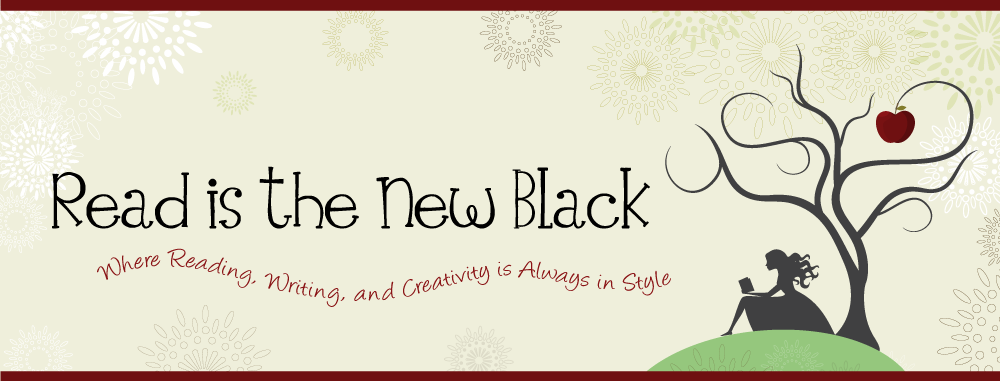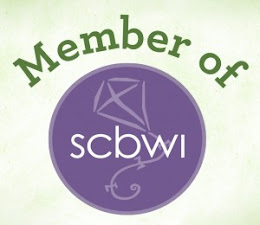Today
I bring to you an interview with Laurel Snyder.
Laurel is from Baltimore, Maryland and now lives in Atlanta, Georgia.
She graduated from the Iowa Writers Workshop and has a background in
journalism, in addition to being an award-winning author. Kidlit
books by Laurel I have read include several of her middle grade
novels-ORPHAN ISLAND (Walden Pond Press), BIGGER THAN A BREAD BOX
(Random House), and SEVEN STORIES UP (Random House), early readers
CHARLIE & MOUSE (Chronicle) and CHARLIE & MOUSE & GRUMPY
(Chronicle), and the picture book THE FOREVER GARDEN (Schwartz &
Wade).
ORPHAN
ISLAND deeply intrigued me from the start all the way to the last
page. In this story, nine children live independently on
an island without adult supervision. Each year, a toddler joins the
group and the oldest child must leave. The backstory
and epilogue is left up to the imagination of the reader. What
kind of homework did you do to create the untold backstory and
epilogue of ORPHAN ISLAND?
Oh,
interesting question! This was a book that materialized very
gradually. I knew I wanted to write a sort of allegorical story, and
I knew I wanted to write about parentless kids. But it took awhile to
arrive at the island.
Once
I did, the job was all about creating the world and its rules, and I
spent about a year on that. I painted a lot of it-- the foods and
animals, the map and the kids. Designing their clothes and laying out
the houses and other places they spent time in.
And
then a lot tweaking had to be done. Figuring out how many kids had
lived there in the past (counted in shoes), and how many could live
there at once. (initially there were ten, but the math didn't work
out that way, for Ess to be Jinny's Care kids).
So
while there was very little traditional research, I spent a lot of
time in prewriting.
Will
readers get to see these details of ORPHAN ISLAND in any future
projects? (I hope it’s “yes!”)
My
next book (MY JASPER JUNE) isn't about the island-- I had something
else in line first. But I'm working on a prequel. One never knows
whether a book will work out well enough to be published. (I have
lots of unpublished messes in a drawer, trust me). But I'm hopeful.
The question is whether the second book is going to make the
experience of the first better, or simply tie up the loose ends. I'm
not interested in just answering people's questions. It needs to
stand on its own.
In
BIGGER THAN A BREAD BOX, readers meet Rebecca, 12, who is struggling
with her parents’ separation. Living with her grandmother, she
stumbles across a bread box that grants her wishes. At first, this
magic box seems like a dream come true, until Rebecca realizes that
the box has a sinister method of producing the things she wants. It
almost felt that this bread box was its own character. How did you
create a character out of an inanimate object?
The
bread box was actually the beginning of the book! I often begin a
story with a question or a catalyst, and then I have to build the
characters who will serve as the engine for the actual plot. That's
exactly what happened in this case.
I
wouldn't say I thought of the box as a character, while writing. But
it makes sense you read it that way. Rebecca certainly has a
relationship with the bread box, a struggle. It's teaching her
something, and she's fighting with it.
You know what's
interesting? Originally, that book had another character, a boy named
Japheth. He became Rebecca's friend in Atlanta, and shared the
adventure with her. But I had to remove him, because it felt like he
was keeping her from getting lonely/sad enough to really do what she
needed to do. I wonder if maybe I channeled that friend-energy into
the box, when I took Japheth away. Hmmm.

In
SEVEN STORIES UP, Annie accompanies her mother to meet her dying
grandmother, a hotel heiress, for the first time. It seems that
Annie’s mother and grandmother have never been close. Then Annie
time travels to 1937 and befriends her grandmother as a young girl.
In doing so, she alters history where it matters the most.
In
the Author’s Note at the end of the SEVEN STORIES UP, you shared
that you had to check all your facts about history, from finding out
the price of a candy bar to learning about Ferris wheels. How did you
research these historical details?
Oh,
wow. It took forever. I'm not really a researcher or nonfiction
writer by nature, and I seriously underestimated the amount of effort
involved. My hat is off to people who write historical fiction for
real! This book actually fell behind schedule and was published late
because of all the time involved.
I used Google a lot, to
be honest. And I kept a Pinterest page with maps and old ephemera I
found, that helped me with the visuals and world-building. But in the
end, I had to go to the library. Because there's just too much
online, and I found myself falling down rabbit holes. At the end of
the day, an Encyclopedia is a very useful tool. Sometimes, less is
more.

In
your middle grade books (e.g. ORPHAN ISLAND, BIGGER THAN A BREAD
BOX,and SEVEN STORIES UP) are an element of magic and fantasy. What
rules do you adhere to when you incorporate magical realism into your
work? (I hope magical realism is the right term to use.)
People
call my books Magical Realism a lot, and I don't think that's exactly
correct, from an academic standpoint, but it works.
I think the main thing is that you need to establish a logic to the individual magical system in the book. And you need to deal with any consequences that arise. If you bring a unicorn in through the window, you need to know how it got there, whether there are more unicorns waiting in the wings, and what, exactly, a unicorn is. Then you need to then feed the unicorn, deal with the unicorn poo, etc. I actually really love that part of the job-- figuring out that other world/logic.
I think the main thing is that you need to establish a logic to the individual magical system in the book. And you need to deal with any consequences that arise. If you bring a unicorn in through the window, you need to know how it got there, whether there are more unicorns waiting in the wings, and what, exactly, a unicorn is. Then you need to then feed the unicorn, deal with the unicorn poo, etc. I actually really love that part of the job-- figuring out that other world/logic.
How
does your writing style differ between writing a picture book such as
THE FOREVER GARDEN and early readers, such as the CHARLIE & MOUSE
books?
Hmmm.
I'm not sure it does, really. I mean, the CHARLIE & MOUSE books
are about my own kids, and so I have a sense of them as ongoing. I
could write them forever, because my kids have adventures that
inspire me daily. But I'm not sure the actual process of writing them
is different.
Though, now that I've said that... I might say that Charlie and Mouse are character-driven (more like a novel). And my picture books typically aren't. So much of the character in a picture book comes from collaboration, from the art. So they tend to be more situational, more about the idea of the story. And less about the character as a person.
Though, now that I've said that... I might say that Charlie and Mouse are character-driven (more like a novel). And my picture books typically aren't. So much of the character in a picture book comes from collaboration, from the art. So they tend to be more situational, more about the idea of the story. And less about the character as a person.
Oh,
so many! I loved really gritty human books like DICEY’S SONG and
BRIDGE TO TEREBITHIA. I loved magic books like HALF MAGIC and the
NARNIA CHRONICLES. I loved old fashioned stories like BALLET SHOE and
A LITTLE PRINCESS, books that painted a picture of another time and
place. And I loved high voiced and comic stories, like MRS. PIGGLE
WIGGLE or THE THIRTEEN CLOCKS.
A lot of these books, I realize now, need context if kids are going to read them today. The world has changed, and we now recognize the problematic elements. I feel strongly about that. But it doesn't change the fact that I loved them.
A lot of these books, I realize now, need context if kids are going to read them today. The world has changed, and we now recognize the problematic elements. I feel strongly about that. But it doesn't change the fact that I loved them.
8.
Are there any upcoming projects you’d like to talk about?
I'm
always working on something! My next novel, MY JASPER JUNE, will be
out in September. (https://nerdybookclub.wordpress.com/2019/02/10/writing-for-the-middle-by-laurel-snyder/)And I have two new CHARLIE & MOUSE stories
coming out this year too, and a picture book with Chuck Groenink,
called HUNGRY JIM. Right now I'm working on my first graphic
novel, a memoir called FAIRY HUNTER. And then the prequel to
ORPHAN ISLAND which
is Abigail's story, mostly.






